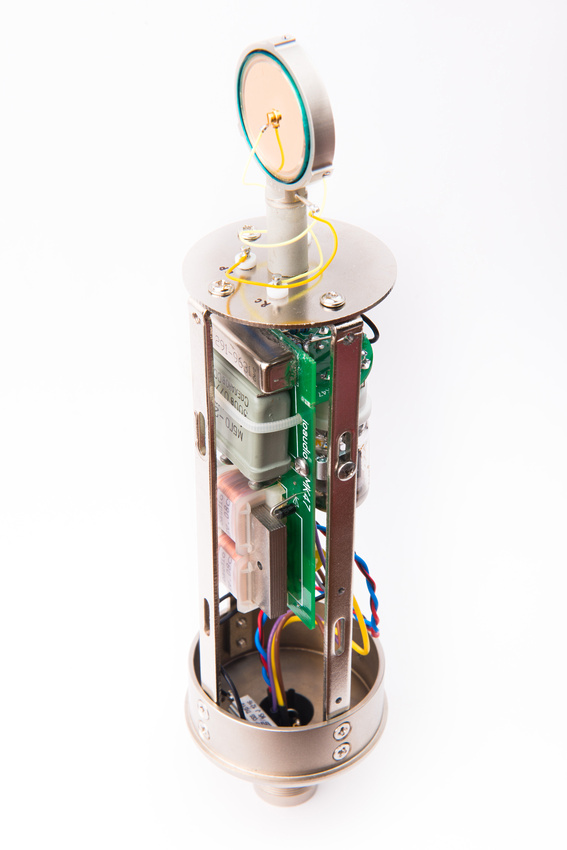barbaroja
Well-known member
- Joined
- Oct 14, 2011
- Messages
- 96
What about a lil thingy like this to feed off the mains and then the meter. Just around$3. Any noise issues? I guess one should shield a thing like that in the psu, as well as put it in the back far from your audio things.
http://www.ebay.com/itm/5V-700mA-AC-DC-Power-Supply-Buck-Converter-Step-Down-Module-CA-/361102127670?pt=LH_DefaultDomain_2&hash=item54135d3236
This way one would not depend on the trafo itself to feed the meter separately.
Here the specs:
-Input voltage of AC 85 ~ 265v 50/60 HZ
-Output voltage DC5V?±0.2V?
-Output current 700MA
-Power 3.5w
Use Environment
- Working temperature:-20 ~ 60?
- Relative humidity?40 ~ 90%RH
Technical requirements
- Input voltage range:85~ 265v
- Input current:0.0273A (AC110V)
0.014A (AC220V)
- Input Inrush Current: 20A
- Output voltage range:4.80~5.2V 0~700mA
- Output power:0 ~4.5 W
- Output efficiency:80%
- Size:3*2*1.8cm
On other thoughts, any word on the voltage reading accuracy? As discussed in the C12 thread, the meter impedance is becoming a parallel load with the mic, thus eating some volts. That was in the case of a DMM. Would be good to relate that to the use of these small digital meters.
Edit: Further research indicated that those meters have a 100K input impedance. Quite different from the 10M DMMs have. However, still this should be interpreted as per what changes would be introduced in the circuit from a constant read.
I found Matadors word on this, from the C12 thread:
"Measuring the polarization voltages is at beast approximate: the high impedances make measure these with regular DVM's inaccurate.
For example, measuring the polarization voltage right at the PSU "P3" node will cause the meter current to drop across R11 (1 MEG). A 10MEG meter will induce a 10% voltage error. A 1MEG meter will cause a 50% error. So a 10MEG meter will always measure 60V (the cardioid setting) as 54V due to the meter impedance alone. 120V will measure as about 110V. The bias node "P4" has a similar problem caused by R5, however a 10% error on 1V is only 100mV.
So a 10MEG meter will always measure 60V (the cardioid setting) as 54V due to the meter impedance alone. 120V will measure as about 110V. The bias node "P4" has a similar problem caused by R5, however a 10% error on 1V is only 100mV.
If you know your meter impedance you can "derate" the reading.
You can't measure anything on the capsule, because the meter current will go across the astronomically high impedances and clobber the results: think of a 250M / 10M voltage divider: the series resistance will clobber 97% of the measured voltage."
http://www.ebay.com/itm/5V-700mA-AC-DC-Power-Supply-Buck-Converter-Step-Down-Module-CA-/361102127670?pt=LH_DefaultDomain_2&hash=item54135d3236
This way one would not depend on the trafo itself to feed the meter separately.
Here the specs:
-Input voltage of AC 85 ~ 265v 50/60 HZ
-Output voltage DC5V?±0.2V?
-Output current 700MA
-Power 3.5w
Use Environment
- Working temperature:-20 ~ 60?
- Relative humidity?40 ~ 90%RH
Technical requirements
- Input voltage range:85~ 265v
- Input current:0.0273A (AC110V)
0.014A (AC220V)
- Input Inrush Current: 20A
- Output voltage range:4.80~5.2V 0~700mA
- Output power:0 ~4.5 W
- Output efficiency:80%
- Size:3*2*1.8cm
On other thoughts, any word on the voltage reading accuracy? As discussed in the C12 thread, the meter impedance is becoming a parallel load with the mic, thus eating some volts. That was in the case of a DMM. Would be good to relate that to the use of these small digital meters.
Edit: Further research indicated that those meters have a 100K input impedance. Quite different from the 10M DMMs have. However, still this should be interpreted as per what changes would be introduced in the circuit from a constant read.
I found Matadors word on this, from the C12 thread:
"Measuring the polarization voltages is at beast approximate: the high impedances make measure these with regular DVM's inaccurate.
For example, measuring the polarization voltage right at the PSU "P3" node will cause the meter current to drop across R11 (1 MEG). A 10MEG meter will induce a 10% voltage error. A 1MEG meter will cause a 50% error.
If you know your meter impedance you can "derate" the reading.
You can't measure anything on the capsule, because the meter current will go across the astronomically high impedances and clobber the results: think of a 250M / 10M voltage divider: the series resistance will clobber 97% of the measured voltage."





